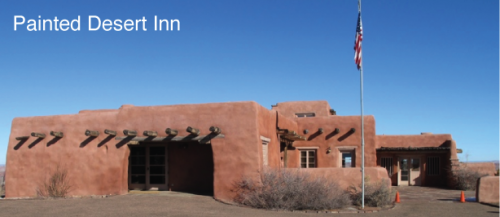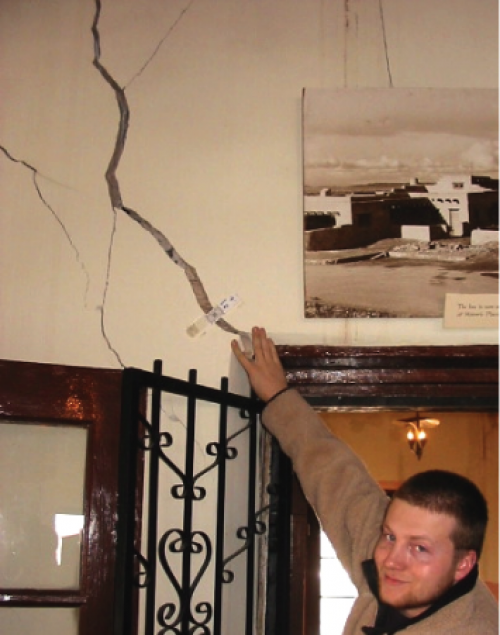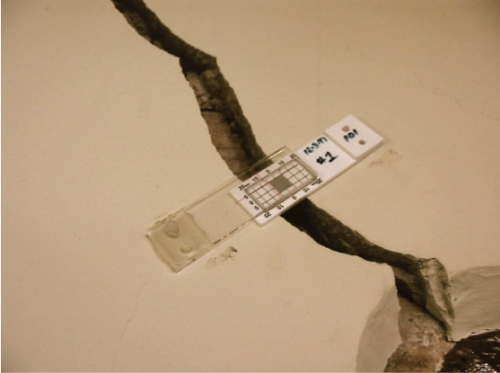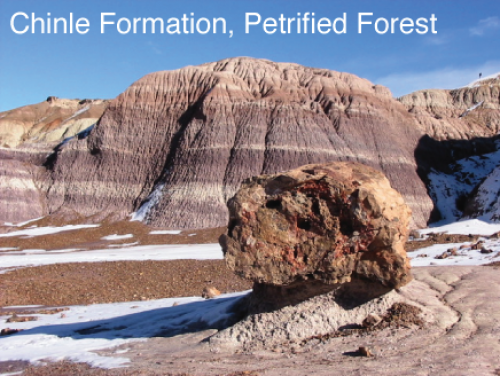Triassic forest fires in Arizona and New Mexico


Petrified Wood
Reference: Late Triassic charcoal from the Petrified Forest National Park, Arizona, USA.
Timothy P. Jones, Sidney Ash and Isabell Figueiral, Palaeogeography, Palaeoclimatology, Palaeoecology, Volume 118 3-4, 2002.
http://www.sciencedirect.com/science/article/pii/S0031018202005497
Swelling Clay and Painted Desert Inn, Petrified Forest, Arizona.



Measuring movement along cracks in the walls of the building using a crack monitoring gauge. Movement is shown by red cross hairs on a grid which is recorded at intervals onto a chart to shows the displacement.
